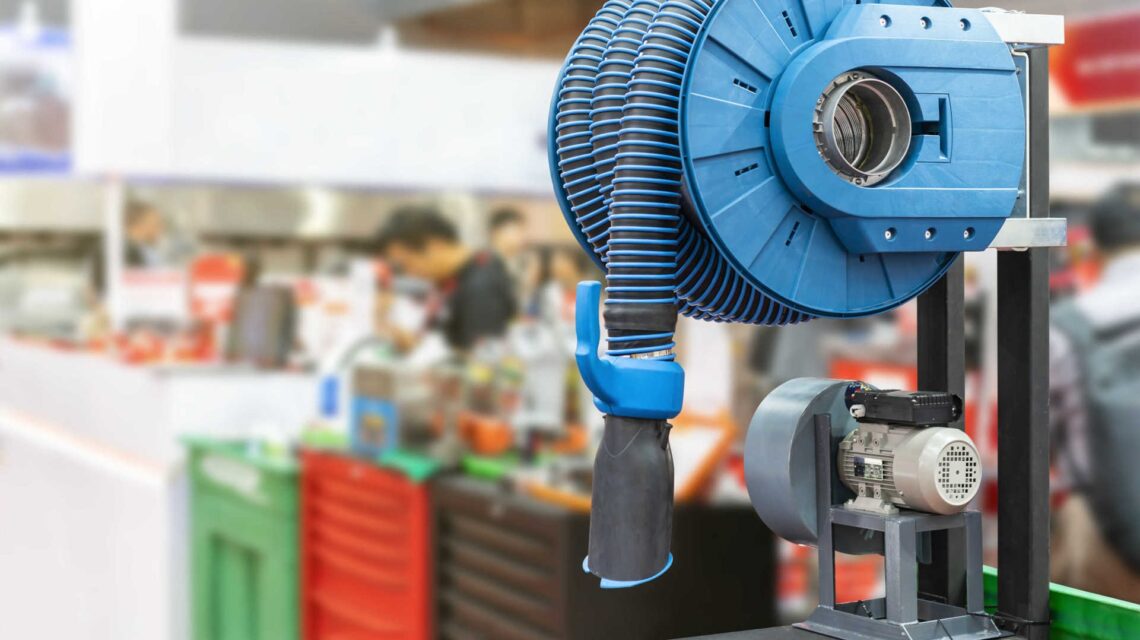In industrial environments, the management of dust and fumes is crucial for maintaining a safe and healthy workspace. If these pollutants are uncontrolled, they can pose serious health risks to workers and may lead to equipment damage and decreased productivity. A dust and fume extractor system can solve that.
This article explains the basics of dust and fume extractors and how they can serve your workplace.
However, before we explore the functionality of these extractors, it’s essential to understand what constitutes dust and fumes in an industrial setting.
Understanding Dust and Fumes
Dust consists of tiny particles suspended in the air and can originate from various sources such as wood, metal, chemicals, or organic materials. In industrial settings, cutting, grinding, and sanding can generate significant amounts of dust particles.
On the other hand, fumes are gases or vapours produced when certain materials are heated or burned. These fumes can contain harmful substances such as chemicals, metals, or solvents. The production depends on the industrial processes involved. Welding, soldering, and chemical reactions are sources of fume emissions.
The Role of Dust and Fume Extractors
Dust and fume extractors are specialised systems deployed to remove airborne particles and gases from industrial environments. These systems utilise mechanisms to capture and filter contaminants, improving air quality and a safer workplace.
Let’s explore some of the crucial functions and benefits of these extractors:
Airborne Contaminant Removal
The primary function of dust and fume extractors is to remove airborne contaminants from the workspace. By capturing dust particles and fumes at the source, these systems prevent them from dispersing into the surrounding air.
Protection of Worker Health
One of the most significant benefits of dust and fume extractors is their role in protecting the health and safety of workers. Exposure to airborne contaminants can lead to respiratory problems, skin irritation, and other health issues.
Removing these contaminants from the air creates a safer and healthier working environment.
Compliance with Regulations
Many New Zealand industries are subject to regulations and standards regarding air quality and worker safety. Dust and fume extractors play a crucial role in helping companies comply with these regulations by controlling airborne pollutants and ensuring that workplace environments meet required standards.
Prevention of Equipment Damage
In addition to protecting human health, dust and fume extractors prevent damage to equipment and machinery. Dust accumulation on machinery can impair performance and lead to premature wear and tear, resulting in costly repairs and downtime.
Removing dust particles from the air maintains equipment efficiency and longevity.
Improvement of Productivity
Eliminating airborne contaminants contributes to a more comfortable and efficient workspace, allowing workers to focus on their tasks without concerns about health hazards or equipment malfunctions.
Dust and fume extractors come in various types and configurations, each suited to different industrial applications and environments.
Types of Dust and Fume Extractors
Some common extractor system types include:
Filtration Systems
Filtration systems use filters to capture dust particles and fumes from the air. These systems may employ varying filters, such as HEPA filters for particles or activated carbon filters for odours and gases.
Extraction Arms
Extraction arms are flexible hoses or ducts equipped with suction nozzles positioned close to the source of contamination. These arms are highly manoeuvrable, allowing for targeted extraction of dust and fumes directly from the point of generation.
Centralised Extraction Systems
Centralised extraction systems cater to multiple workstations or areas within a facility. These systems feature a centralised unit connected to ductwork or piping that distributes extracted air from various points in the facility to a central filtration unit.
Mobile Extractors
Mobile extractors are portable units equipped with wheels or handles for easy transport between locations within a facility. These units are ideal for applications requiring mobility and flexibility.
How to Know What Type of Extractor to Use
Determining the most suitable dust and fume extractor entails assessment of various factors.
Firstly, it’s crucial to identify the sources of contamination within your facility and thoroughly evaluate their properties, including size, density, and composition.
Next, calculate the necessary airflow volume and velocity to capture and remove contaminants from the workspace. Note the layout of your facility, mobility requirements, and any regulatory standards. Consulting with industry experts and suppliers can provide valuable insights into your options and help tailor a solution to your needs.
Conducting thorough site surveys and risk assessments will further refine your understanding of the challenges and requirements unique to your facility, enabling you to make an informed decision.
By carefully considering these factors and seeking expert guidance, you can select the most appropriate dust and fume extractor to ensure a safe and healthy working environment.
Create a Safer Workspace Today
Dust and fume extractors are critical in maintaining a safe, healthy, and productive industrial environment.
You can create environments conducive to productivity and innovation when you prioritise the health and safety of your workers. Take the first step by buying your first extractor system today!

